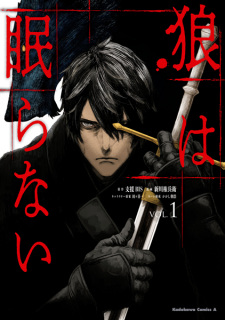Dec 23, 2022
The minotaur, boss of the tenth level, has broken its stay and proceeded to wreak havoc throughout the dungeon. Yes, beheading troublesome orcs, gutting massive gray wolves, and crushing ignorant human adventurers in search of glory, the minotaur is a monster that has made the labyrinth its chief domain.
The Micaene Adventurers Guild has a problem on its hands.
KING OF THE LABYRINTH sets its sights on a regional dungeon, within whose depths reside 100 consecutive levels of monstrous doom. In the belly of this labyrinth roams a denizen that is breaking all of the rules. Why is the minotaur roaming other levels? Why is it killing
...
other monsters? Why is it equipped with fantastic weaponry? And how come nobody can kill the darn thing?
This is an interesting manga. There aren't many books in the swords-and-sorcery vein that privilege the life and experiences of "the bad guy." It's unfortunate. So many fantasy narratives rely so strongly on carving from the ether an otherworldly antagonist capable of rending the world asunder. And yet so few narratives spend the energy required to give readers a glimpse of the world through the eyes of said antagonists. KING OF THE LABYRINTH fixes this. The minotaur is not a particularly brilliant beast, but he is capable of knowledge. The minotaur is not a particularly patient beast, but he is capable of study. This novel explores the yearnings of a creature eternally and infinitely disregarded by all. The minotaur's will to survive -- its thirst for water, its hunger for flesh, its lust for combat -- compels the beast forward.
At first, the creature is dumb; it doesn't understand the dynamics of combat and knows not what to do with the pain of starvation. But slowly, the creature gains experience and clarity of purpose; the more it fights, the better resources and sustenance it obtains, and the stronger the opponents it fights, the better the fighter it will become. The narrative thereafter witnesses the minotaur establish its need to fight the strongest opponents possible to sate its ever-widening desires.
KING OF THE LABYRINTH wields two narrative styles: the hardy, slow-wit of the beast and the impatient gravitas of humans. Interestingly, the balance leans in favor of one or the other depending on how stable or chaotic the situation is at the labyrinth. The book's short chapters and brisk pace enable a quick and dutiful comparison of common events that gives readers multiple perspectives of the labyrinth's ongoing descent into disorder. The adventurer's guild is thrown into confusion. Local nobility is filled with anxiety. But the minotaur roams and kills as he pleases. That the beast is rarely defeated is a glorious, though not always inevitable antecedent to a genre all too full of misrepresented villainy.
Readers will surely bemoan the author's pursuit of an anticlimactic ending and varied flirtation with renowned heroes, jocular sorcerers, and discriminating hunting parties. However, the minotaur is the main character, and readers should never forget this point. And while the novel retains a few technical faults (e.g., poor dialogue, despite there being so little of it) and organizational failures (e.g., the pull of characters destined to do certain things feels contrived), KING OF THE LABYRINTH, broadly, sticks to its core mission of doing the minotaur justice.
Reviewer’s Rating: 10
What did you think of this review?
Nice
 0
0
Love it
 0
0
Funny
 0
0
Confusing
 0
0
Well-written
 0
0
Creative
 0
0Show all
























